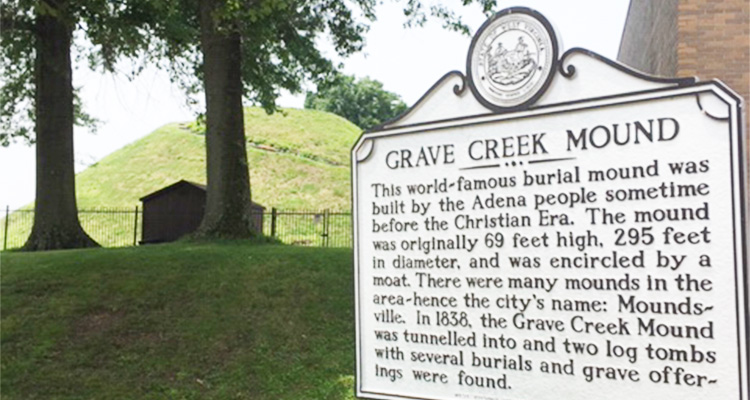The Mound and the Grave Creek Mound Archaeological Complex in Moundsville, West Virginia, are worth a visit, and there are plenty of events and exhibits this summer to keep you coming back for more.
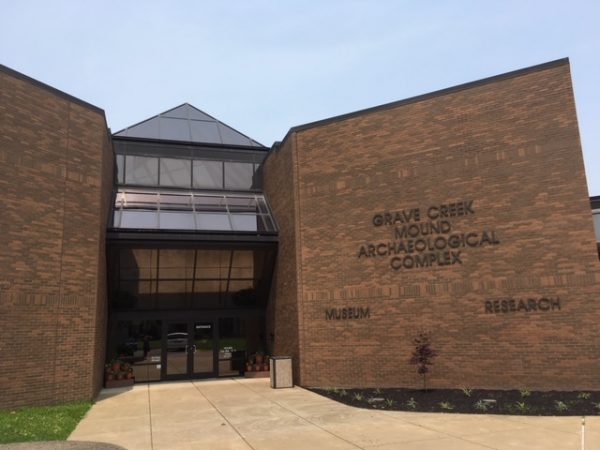
The Mound Museum (often referred to as the Delf Norona Museum) was a place where we went on school field trips and where the Marshall County Schools art show was held every year. Growing up in Marshall County, my memories of visiting the museum as a kid consist of a giant taxidermy grizzly bear standing on hind legs in the hallway that made quite an impression on me, as did the Adena Indian family statue exhibit.
Today, both the bear and the statues are a thing of the past, but there are plenty of other captivating exhibits.
The mound is a place you can take for granted. For me, it wasn’t until later in life that I began to ponder its significance and realize what a unique piece of history it is — and only a half an hour from where I grew up.
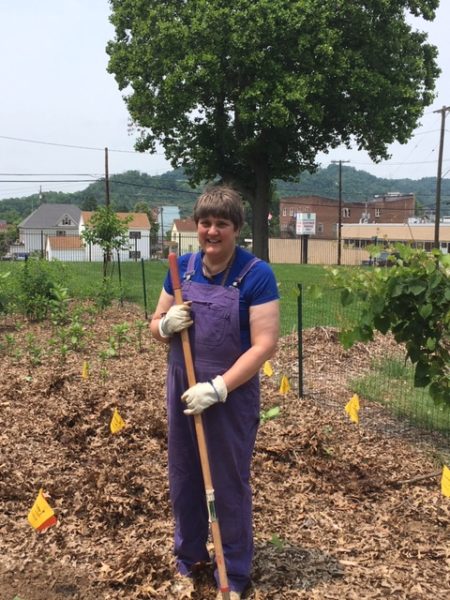
I recently began following the museum on social media. After attending a lecture about all of the other forgotten, and often destroyed, mounds in the area, I signed up for a weekly email and became amazed at all the museum has to offer for adults and children.
Regular school field trips to the museum are still a common occurrence, and Cultural Program Coordinator Andrea Keller is always there to greet them. She has worked for the state since 1998, hired that year as a curator of archeological artifacts and documentation at Grave Creek on a temporary basis. She was then hired as a survey archaeologist at the State Historic Preservation Office in Charleston later that year, she noted.
No stranger to the bygone era of burial mounds, Andrea’s first full-time job was at the Dickson Mounds Museum in Illinois. Now she helps to coordinate and plan most of the events at the museum in Moundsville. The exhibits inside the museum offer an educational history of the discovery and excavation of the mound, but also include a variety of unrelated and interesting artifacts, such as a European cave bear skull and a large collection of vintage Homer Laughlin China Company plates, manufactured in Newell, West Virginia.
Some tourists come from out of town just to see the mound, making it a destination in West Virginia. Other visitors, in town to see the Moundsville Penitentiary across the street, check out the mound while waiting for their penitentiary tour to begin — a benefit for both destinations.
A BRIEF HISTORY
The mound itself is fascinating, and it’s no wonder some people travel to Moundsville just to see it.
Construction of the mound is thought to have taken place in stages between 250-150 B.C. by the Adena people who lived throughout the Ohio Valley. It is believed that over 60,000 tons of earth were moved to make the mound, that was originally 69 feet tall.
In the 1700s, Joseph Tomlinson owned the property where the mound sits and had a house built not far from it. The mound was so heavily forested that Tomlinson did not discover it until he came upon it while hunting one day. He knew it was not a natural hill, and he insisted on preserving the mound as is and turned down all offers to excavate it while he was alive.
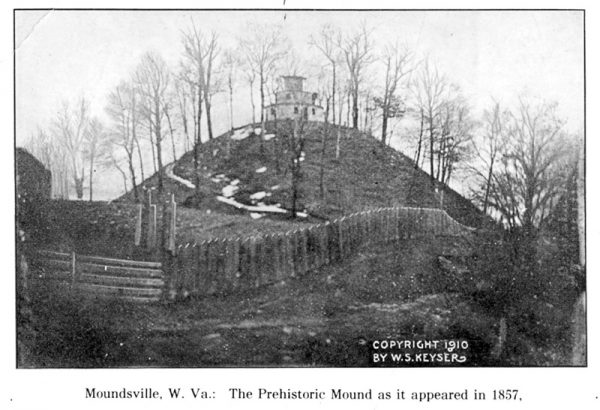
It wasn’t until years later that an excavation took place — in 1838 — by one of Tomlinson’s distant family members. It was discovered that the mound held the remains of several Adena people, along with many artifacts and jewelry as burial offerings.
The 19th century was known for sensational archeology hoaxes, and the excitement of this excavation led to absurd claims and hoaxes, such as that the remains found were skeletons of giants, and the famous Grave Creek Stone. The stone contained hieroglyphic characters and was later determined by several professionals to be a very successful hoax that had puzzled those who tried to decipher the characters. Tunnels were dug into the mound during the first excavation, which actually damaged some artifacts and evidence that could have offered useful information about the Adena people. People were allowed to enter the mound through the tunnels. A museum was constructed into the lower burial chamber, and admission was charged for visitors.
In the early 1900s, an observatory was constructed on top of the mound, giving visitors a view of the surrounding countryside. Eventually, this museum was abandoned, and the observatory was left to decay. After an effort by residents to save the mound, the State of West Virginia purchased it in 1909. Archaeologist Delf Norona, who helped found the West Virginia Archeological Society, was instrumental in getting the museum as we know it opened in 1978. Today, admittance into the museum and a climb onto the top of the mound is free for all.
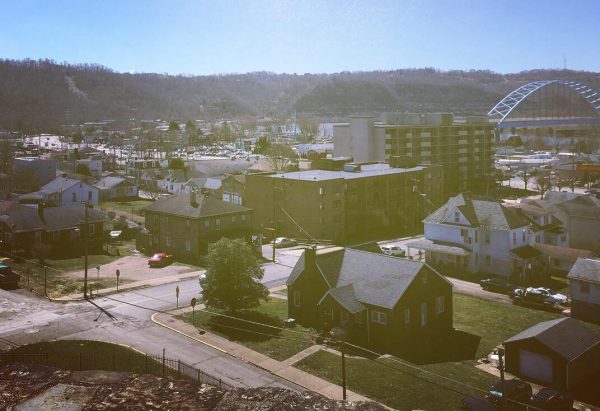
INTERPRETIVE GARDENING DAY
I decided to meet up with Keller during the Interpretive Garden Planting event last month at the museum’s garden, located next to the mound. For this event, the public was encouraged to plant the crops that Native Americans would have traditionally planted in West Virginia, such as gourds, corn, squash, beans and sunflowers — all while using a replica of a traditional stone garden hoe that the Native Americans would have used.
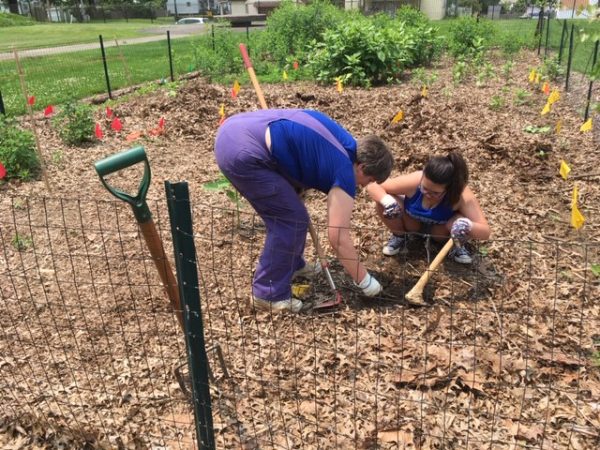
Andrea said that the seeds they planted were based on Native American plants. “Some of them are garden plants. There’s something called the Three Sisters — corn, beans and squash. Not every tribe was the same, but for some of the tribes, there was a tradition that corn was the tall sister, beans being the affectionate sister because it twines, and squash was the protective one because it spreads out and is a little prickly,” she explained.
She said that the seeds being planted that day in the garden would be harvested later for other activities, such as making seed packets that visitors can take home to plant.
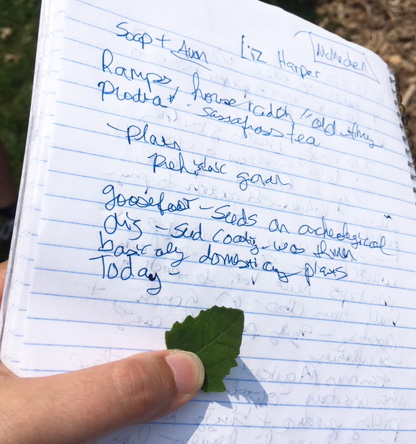
While standing in the garden, I noticed a leafy bush in the corner — a “goosefoot,” so named for the shape of the leaves. When I asked what that plant can be used for, Andrea asked if I was “feeling brave” and then pulled off several leaves and gave me one to eat. Goosefoot seeds have often been found in archeological digs.
The taste of the leaf was bitter, but not terrible, and it was easy to imagine it as a regular part of the diet of Native Americans.
“Today, we can use it like spinach. It’s actually a very invasive plant,” said Andrea.
After watching Andrea and her volunteers plant the garden, I got a tour of the activity room that continued the Native American crops theme. I made seed packets and got to take home seeds of a particular type of bean that were descendants of the beans taken on the Lewis and Clark expedition.
“All plants in a garden have a little bit of history,” Andrea explained to me when I voiced my surprise over the seeds’ history. Before I left for the day, Andrea had given me two tomato plants she had brought from her personal garden to share with anyone who showed up at the planting.
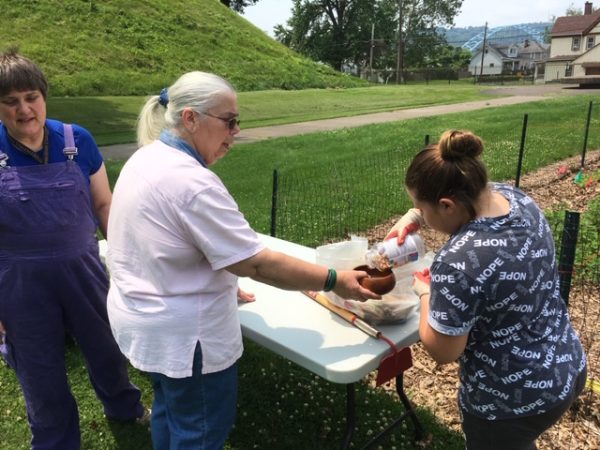
MUSEUM HAPPENINGS
There are so many events happening at the museum in a given month it is hard to keep track of them all.
Possibly the most attended event is Archeology Day, held on the first Saturday in October (Oct. 5, this year), which includes spear throwing, flint knapping, and other exhibits, demonstrations and hands-on activities relating to archeology.
Twice a year, in March and September, is Fossil Day. The public is encouraged to bring any fossils they have found to have them identified by geologists who will be on hand to answer questions. There are several kid stations to visit, with crafts and activities, and a geology film is shown in the auditorium.
Throughout the year, free educational films are shown in the auditorium. A lecture series on various topics is offered the last Thursday of every month, with topics such as Native Americans in West Virginia and underwater archeology.
On Aug. 6, the museum is teaming up with the Moundsville-Marshall County Public Library for a NASA Starlab Planetarium show. The event is geared toward kindergarteners through sixth-graders, and every half hour — starting at 11 a.m. and ending at 1:30 p.m. — kids can experience constellations and how the sky would have looked to Native Americans.
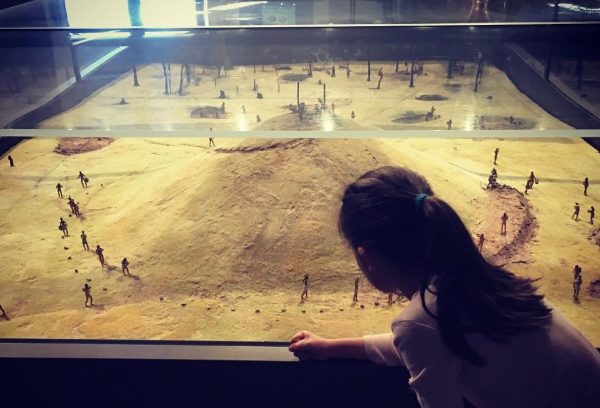
One upcoming event that is especially close to Keller is the July 20 anniversary of the 50th year of the landing on the moon. After her father recently passed away, she found in his personal belongings films of when he worked in Los Angeles for a company that worked on rockets for the moon mission.
“I found these films and had them transferred onto a digital format, so I’m planning on showing those on the anniversary date.” She is still working on the logistics of this event, but is excited to share a part of her father’s life with the public.
Another gift the museum gives to the public is displaying the work of local photographers and artists. There is a small display in the lobby that features an artist of the month. “What we’re trying to do is promote local artists. Our site manager, Jeremy Kohus, is always looking for featured artists.”
I left the museum after my time at the Interpretive Garden Planting event with Andrea and her volunteers with my two tomato plants and Lewis and Clark seeds in tow, feeling pretty lucky to have the mound and museum located so close to where I live. I know there will always be an interesting lecture or exhibit to attend just around the corner. I can take my two daughters to many events this summer and know they will be entertained.
I like to think about how all of these events today are made possible because the Adena people built a burial mound for important members of their society over 2,000 years ago. I know that a world of interesting facts awaits within the walls of the museum any time I’m ready for them, and for one of the best views in the valley that’s just short walk up a really old hill in Moundsville.
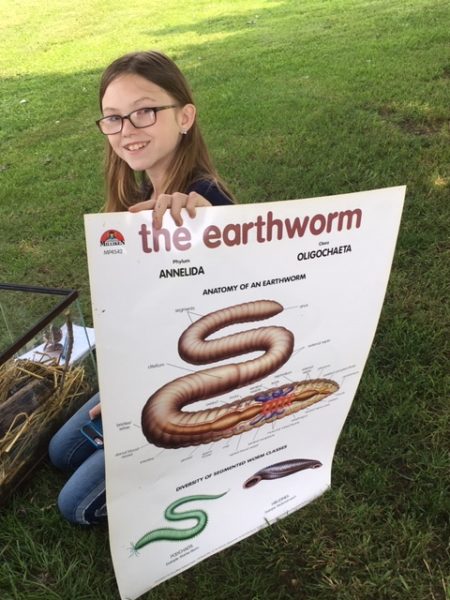
UPCOMING EVENTS:
June 29 — A Secret History of American River People
July 11 — Having Fun with Archeology (at Cockayne Farmstead)
July 13 — “Making North America: Human” (film)
July 20 — Celebrating the 50th Anniversary of the First Moon Landing
July 27 — Damsels to the Rescue (Storyteller Judi Tarowsky)
Aug. 6 — NASA Starlab Planetarium Presentation
Aug. 10 — “First Face of America” (film)
To volunteer at the museum or to have your art on display, call 304-843-4128.
Sources: All information I learned about the mound is taken from the exhibits in the museum, the mound’s website and Delf Norona’s “Moundsville’s Mammoth Mound” report published in 1962.
• Kelly Strautmann lives out in the country of Cameron, West Virginia, and proofreads in the city of Wheeling. She has a supportive and talented husband and two ridiculous daughters who keep her busy and full of love.


